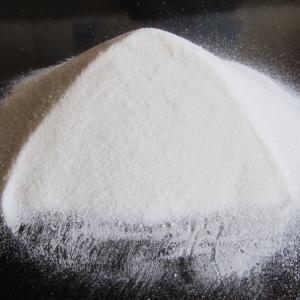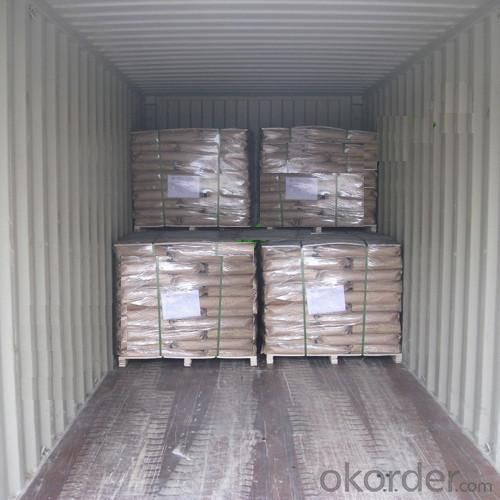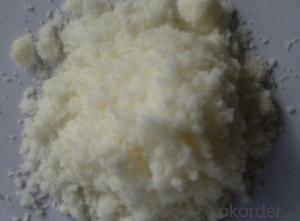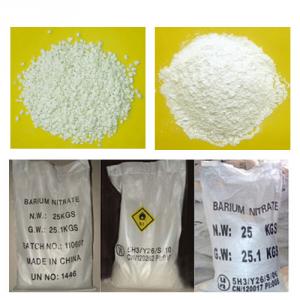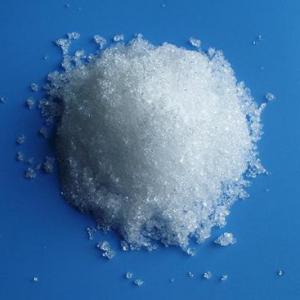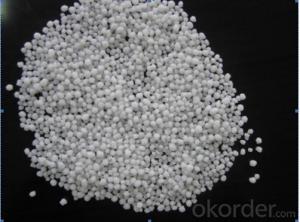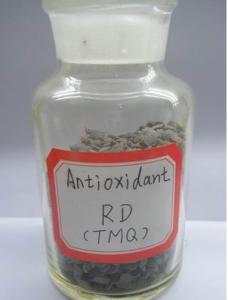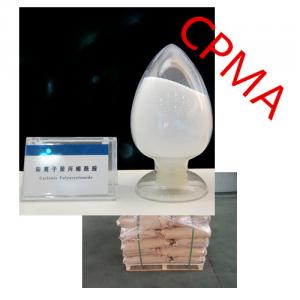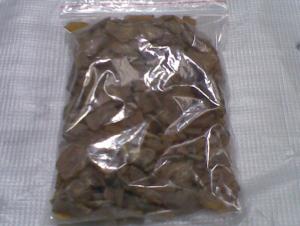Potassium Nitrate Industrial Grade Construction Chemical
- Loading Port:
- China main port
- Payment Terms:
- TT OR LC
- Min Order Qty:
- 1000 kg
- Supply Capability:
- 500000 kg/month
OKorder Service Pledge
OKorder Financial Service
You Might Also Like
Potassium Nitrate Industrial Grade Construction Chemical
Description:
Molecular formula: KNO3
Molecular weight: 101.10
Performance:
It is colorless rhomboidal crystal or powder particle. Relative density is 2.1109; melting point is 333℃. It resolves and emits oxygen at 400℃ and become potassium nitrite. It is soluble in water(0℃, 13.3g/100gH2O;30℃,
45.8g/100H2O;100℃, 246.0g/100gH2O), insoluble in alcohol, soluble in liquid ammonia and glycerol.
Industrial use:
it is raw material for the production of black powder, ignition harness and fireworks; it is used as salt bath in mechanical heat
treatment; used to produce color ceramic glaze, glass refining agent, lens, optical glass, kinescope glass and etc. It is also be
used to produce Penicilline potassium salt, as color former and preservative for meat product.
Executive Standard :
national standard GB/T 1918-2011.
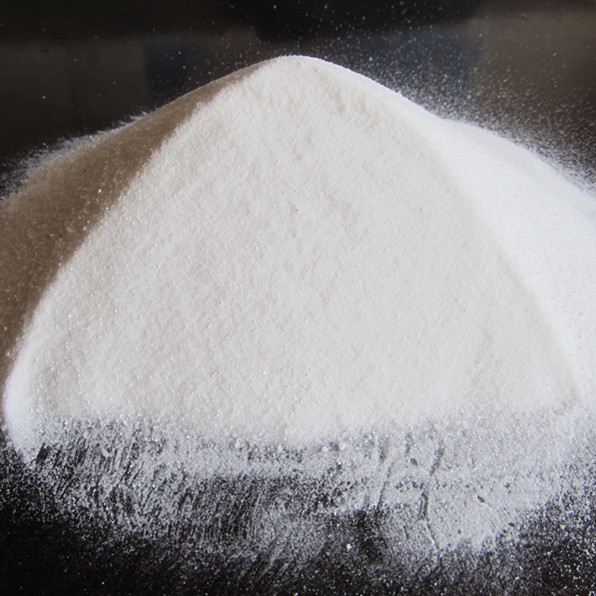
specification inspection item | Unit | industrial grade (GB/T1918-2011) | ||
high-class product | top quality product | qualified product | ||
content | % ≥ | 99.7 | 99.4 | 99.0 |
moisture | % ≤ | 0.10 | 0.20 | 0.30 |
chloride(in Clˉ) | % ≤ | 0.01 | 0.02 | 0.10 |
water insoluble | % ≤ | 0.01 | 0.02 | 0.05 |
sulfate(in SO4ˉ) | % ≤ | 0.005 | 0.01 | — |
moisture rate | % ≤ | 0.25 | 0.30 | — |
Ferrum(Fe) | % ≤ | 0.003 | — | — |
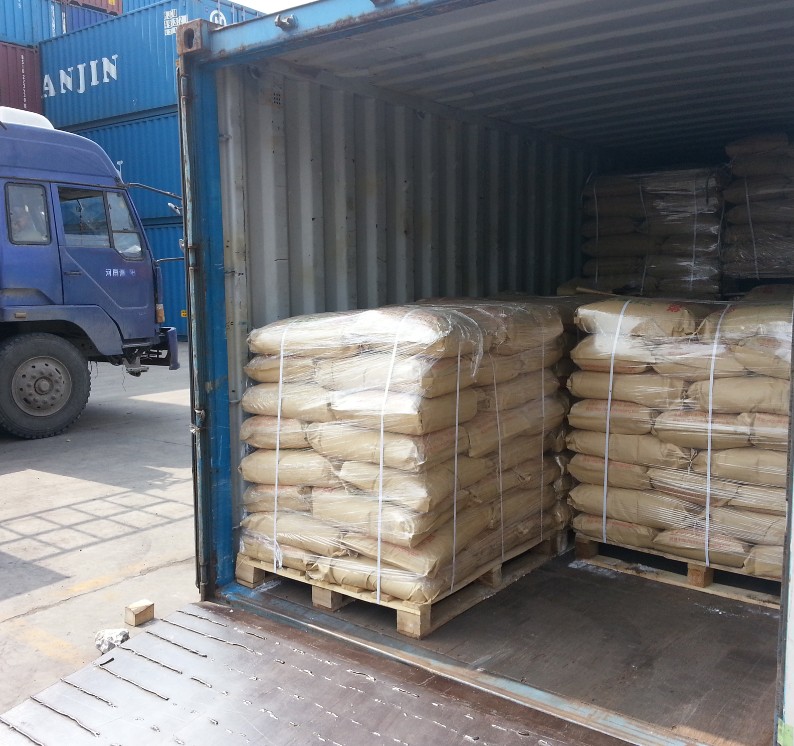
Packing:
plastic woven bag or paper-plastic compound bag, inner plastic bag;polythelene bag, net weight is 25/50KG.
Protection: Please wear respirator to avoid Potassium nitrate dust inhalation to protect respiratory organ; and please wear
work clothes and latex gloves to protect skin.
Storage:
in dry, cool and ventilated warehouse, be away from heat and fire source. The temperature should not over 30℃, and relative
humidity should less than 80%. In addition, it should separate from reducing agent, acids,
Inflammable matters and reactive metal powder.
FAQ
1.Q: What is MOQ?
A: Our MOQ is 1 TON.
2.Q: Could you offer free sample?
A: We can provide free samples to you for quality testing.
3.Q: What about your packing?
A: For liquid: Flexitank, or IBC tank 1000L
For powder:Woven fabric bag with plastic film liner( 25kg or 1000kg)
Clients’ packing is workable.
4.Q: How about your productive capacity?
A: 150000 tons/Year.
5.Q: What is your delivery time?
A: Within 7 days after received deposit or L/C at sight.
- Q: The addition of the catalyst has no effect on the chemical equilibrium of the movement
- Factors that affect the chemical balance of movement are mainly concentration, temperature, pressure and so on.
- Q: What is the catalyst for high chemistry?
- Concentrated sulfuric acid, NI, barium bromide, copper or silver
- Q: The chemical equation of heating reaction of benzene and hydrogen under the action of catalyst
- C6H6 benzene + 3H2 - (arrow) C6H12 cyclohexane (Ni catalytic heating)
- Q: Is the catalyst in the chemical reaction better?
- No, you can. Too much useless
- Q: In chemistry what is a catalyst and an example?
- A catalyst is a liquid or a gas you can add to a substance to make it react quicker and/or upon itself or another chemical. A catalyst can be one chemical you add to another that causes a significant reaction or they could be variables in an experiment (like temperature) can be a catalyst. It could also be a liquid/gas that you add to a substance to neutralize it or make it safe to clean/touch/handle. For instance if you spill chemicals in a biology lab, you have to add a catalyst (generally water or clarifying soap) to make it safe to clean up. Hope I could help.
- Q: What is the reaction in chemistry?
- Industrial production of ammonia, ethanol, industrial synthesis of ammonia, ethanol catalytic oxidation, acetaldehyde oxidation into acetic acid, ethyl acetate preparation, the transformation of automobile exhaust, benzene substitution reaction and addition reaction, some other addition reaction of hydrocarbons, Ethanol dehydration to produce ethylene and so on
- Q: Chemical master invited (about catalyst)
- From the thermodynamics can be reaction, and the three formulas can be added to eliminate the intermediate product, indicating that the reaction may occur. The definition of the catalyst is not complete. I am a junior undergraduate student of Jilin University School of Chemistry, according to the definition of the catalyst in the university textbook, the catalyst itself reacts with the reactants to produce unstable intermediates. After the reaction is finished, the intermediate product is explained and the catalyst is reduced. Apparently did not participate in the reaction. So the catalyst to change the course of the reaction, the original reactants to go through a relatively high energy to produce products, there will be a catalyst after a few relatively low energy barrier, so much easier, the reaction rate is greatly accelerated The It can be seen, the catalyst is not no response, but only after the completion of the reaction to restore it. It can also be seen that the amount of catalyst does not matter, and some reactions require the amount of catalyst to be approximately equal to the amount of reactants. Waiting for you to high school and university to further study on this issue will have a more clear understanding of the.
- Q: A substance involved in chemical reflection, but reflects the quality of the material before and after the change, you say it is a catalyst?
- Is a catalyst. The catalyst is actually involved in the reaction, (these are multi-step reaction), but in the final time from the reaction out.
- Q: I know that a species that does not appear in the chemical equation may also affect the rate of a reaction - e.g. a catalyst. But does that mean the catalyst can be present in the rate equation, and if so are catalysts always present in the rate equation?
- Any reaction with a finite amount of reactants has a half-life, whether it's first order, second order, zero order or complex order. The half-life (t?) is defined as the time taken for the reaction to go half-way to completion. If the reaction is: A + B ---products and A is in excess, then t? will be the time taken for half of B to be used up. For all reactions, then, you get a decay curve. For zero-order reactions, this 'curve' is a straight line, but for all other orders, the curve is an actual curve and it is quite difficult to distinguish, by visual inspection alone, whether it is exponential (indicating a first-order reaction) or hyperbolic (indicating a second or higher order reaction).
- Q: chemistry subject
- I don't think there's just a few of them.
Send your message to us
Potassium Nitrate Industrial Grade Construction Chemical
- Loading Port:
- China main port
- Payment Terms:
- TT OR LC
- Min Order Qty:
- 1000 kg
- Supply Capability:
- 500000 kg/month
OKorder Service Pledge
OKorder Financial Service
Similar products
Hot products
Hot Searches
Related keywords
